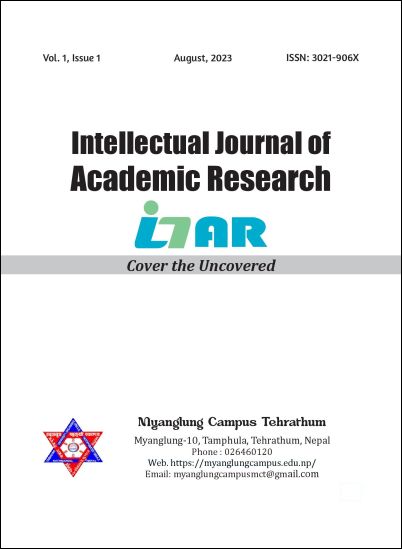Socio-cultural Status of Widows: A Case Study of Myanglung Municipality Ward No. 1 and 2 Tehrathum District
DOI:
https://doi.org/10.3126/ijar.v1i1.69378Keywords:
widows, system, social demography, caste, ethnicity, language, ageing, socioeconomic characteristics, gender statusAbstract
This study highlights the challenges faced by Nepalese widows and the need for greater support and understanding from society. The study was limited to Myanglung Municipality Ward No.1 and 2 within 30 widows of major religious group Buddhism and Hinduism. The negative perception of widows in Nepalese society makes it difficult for women, and the death of a husband brings about significant behavior changes in women, with many becoming aggressive and depressed. The study found that a significant percentage of Nepalese women become widows at a young age, with 73% of women marrying in or around their teenage years. Men tend to die sooner than women. The study used snowball sampling to reach the respondents, and the total sample size from different parts of Myanglung Municipality Ward No.1 and 2 was 30 respondents from Buddhist and Hindus for formal and informal talks with key informants and focus group discussions to perform qualitative research. The study also found that there is hardly any study and research carried out related to widowhood in the Nepalese context, and there were limited materials related to the socio-cultural status of widows available.
Downloads
Downloads
Published
How to Cite
Issue
Section
License
Copyright (c) 2023 The Author(s)

This work is licensed under a Creative Commons Attribution-NonCommercial 4.0 International License.
This license enables reusers to distribute, remix, adapt, and build upon the material in any medium or format for noncommercial purposes only, and only so long as attribution is given to the creator.




